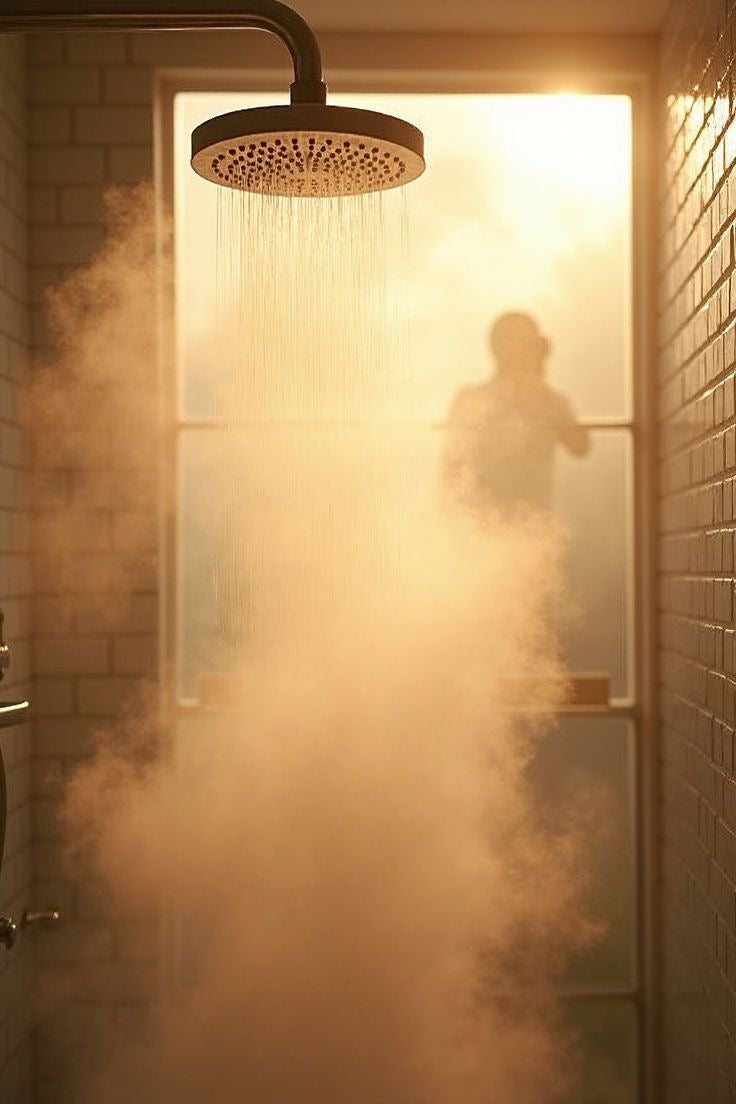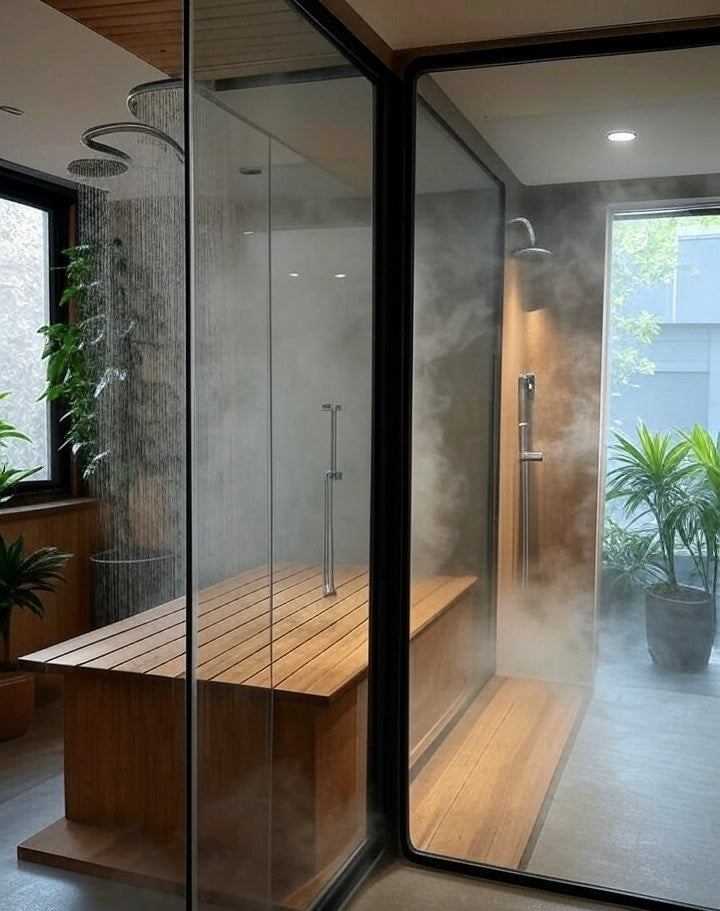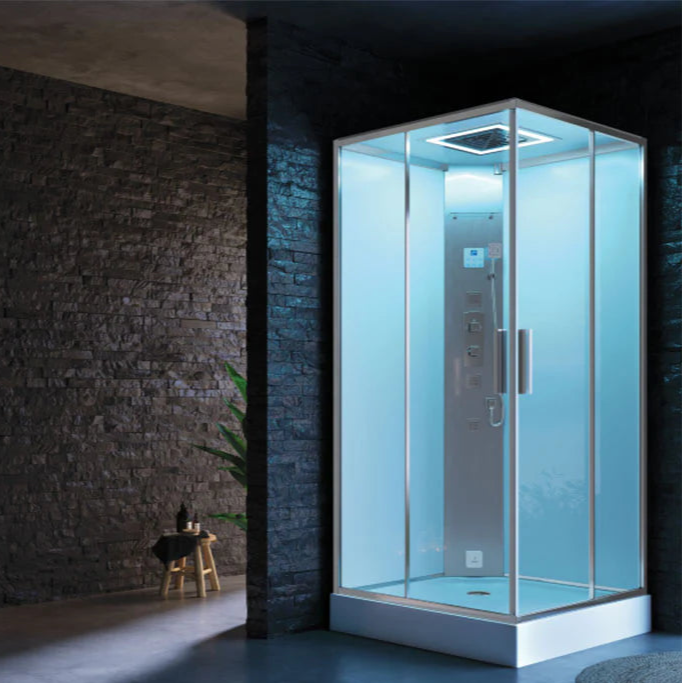Thinking of diving into an ice bath but stuck between a rustic Cold Plunge Tub or a sleek Steel Ice Bath Tub? Short answer: Steel wins on durability, wood wins on vibes. Keep reading to see how each Cold Plunge option holds up in style, upkeep, and chill factor!

Understanding the Materials: Wood and Steel in Cold Plunges
When you're picking a Cold Plunge Tub, the material you choose plays a bigger role than you might expect.
Wood and steel each bring something different to the table. Wood feels earthy and cosy. Steel, on the other hand, has a clean, modern edge.
Let’s look closer at what each one offers and where they fit best.
The Allure of Wood Cold Plunges

Natural Aesthetics and Ambience
Wood cold plunges, especially those made from Red Cedar, add a rustic charm to any space. They blend beautifully with garden retreats and spa corners.
Each wooden tub is unique, thanks to the grain and tone of the timber. This natural variation brings a warm, welcoming character that many people love.
They’re ideal if you’re going for a calming, nature-inspired setup.
Insulation Properties
Wood naturally provides some insulation.
This helps it retain cold water temperatures for longer, especially when used with ice. It also makes plunging more comfortable, as the surface doesn’t feel freezing to the touch.
It’s a subtle but noticeable difference when compared to steel.
Common Wood Types
Red Cedar is a popular choice and for good reason.
It’s naturally resistant to mildew, bacteria, and the elements. It also smells fantastic — an added bonus during each plunge.
Other woods may be used, but cedar remains a top pick for both looks and longevity.
The Strength of Steel Cold Plunges

Modern Aesthetics and Design
Steel cold plunges offer a sleek, industrial appearance.
They’re ideal for minimalist homes, luxury gyms, or contemporary recovery spaces. The clean lines and polished surfaces create a professional look.
If you prefer modern over rustic, steel is usually the winner.
Superior Durability and Hygiene
Steel is strong. Very strong.
Stainless steel in particular resists rust, corrosion, and staining. It’s also non-porous, which makes it harder for bacteria to grow — making it a hygienic choice for regular use.
Stainless Steel Characteristics
Because it doesn’t absorb water, stainless steel is incredibly easy to clean.
It’s resistant to mould, mildew, and mineral build-up. Over time, it maintains its shine and functionality with minimal effort.
This makes it a very reliable long-term investment.
Head-to-Head Comparison: Wood vs. Steel
Performance and Efficiency
Steel plunges are better at cooling quickly, especially when connected to a chiller system. Their high thermal conductivity helps the water reach the desired temperature fast.
Wood, by contrast, holds cold well once chilled, but it takes longer to cool without a system in place.
For efficiency and consistent temperature, steel has the upper hand.
Integration with Chiller Systems
Most steel plunges are built with chillers and filtration systems in mind.
This allows you to set and forget — the temperature stays stable without constant adjustments.
Wooden tubs can also work with chillers, though it may require custom fitting depending on the model.
Maintenance and Longevity
Cleaning and Upkeep Requirements
Steel plunges are easy to maintain.
Wipe them down and you’re good to go. They don’t trap moisture, so mould and stains are rarely a problem.
Wooden tubs look amazing but need regular attention — especially if placed outdoors.
Resistance to Wear and Tear (Corrosion, Mould, etc.)
Stainless steel is naturally resistant to rust and wear.
Wood, while often treated, is still more vulnerable to rot and mildew, especially in humid conditions. Over time, wood needs resealing or repairs if not properly maintained.
Steel just holds up better under pressure.
Expected Lifespan
With care, both materials can last a long time.
But in terms of pure longevity, steel usually lasts longer. It also maintains its appearance and structural integrity with minimal upkeep.
Wood requires a bit more effort but can still serve you well if treated correctly.
Cost and Investment
Upfront Purchase Price
Wood cold plunges often cost less at the start, especially simpler models or hand-built tubs.
Steel cold plunges, particularly those with chillers and filters, usually come at a higher price point. But you get advanced features and long-term value in return.
Think of it as an investment.
Long-Term Running Costs (Ice vs. Chiller, Maintenance)
Wood tubs usually rely on ice — which adds up over time.
Steel setups with chillers use electricity, but they cut out the need to buy ice constantly. You’ll also spend less on maintenance overall.
It’s worth calculating these factors before choosing.
Resale Value
Steel plunges tend to hold their value well.
Thanks to their durable build and integrated features, they’re appealing to second-hand buyers.
Wooden tubs can also resell — but only if well-kept.
Installation and Portability
Space Requirements
Both wood and steel tubs need a dedicated spot.
Make sure there’s proper drainage and easy access to electricity if you're using a chiller.
Indoor or outdoor — plan your setup carefully.
Ease of Relocation
Wooden tubs are often lighter and easier to shift, especially simple ice bath types.
Steel plunges, especially those with built-in systems, are heavier and harder to move once installed.
So, if portability is important, wood may offer more flexibility.
Making the Right Choice for Your Needs
Ideal Scenarios for Wood Cold Plunges
If you’re drawn to natural aesthetics and want a traditional spa-like vibe, wood is a perfect match.
It’s also great for those dipping their toes into cold therapy for the first time. Budget-friendly and beautiful — what’s not to love?
They work best indoors or in shaded areas to avoid weather wear.
Ideal Scenarios for Steel Cold Plunges
Steel is ideal for regular users or those running a business.
It's robust, hygienic, and easy to maintain. If you prefer a minimalist look and want tech compatibility (chillers, filters), steel’s the way to go.
It’s built for performance and durability.
Conclusion
Choosing between a wood or steel cold plunge isn’t about which is better overall — it’s about what works best for you.
Wood offers warmth, comfort, and visual charm. Steel delivers strength, cleanliness, and sleek functionality.
Consider how often you’ll use it, where it will live, and how much maintenance you’re happy to do. That’s the real decider.
Takeaways
-
Steel cold plunges are perfect for frequent use, low maintenance, and high durability.
-
Wood cold plunges win on aesthetics and natural insulation but require more care.
-
Steel works better with chillers; wood pairs well with ice-based setups.
-
Think long-term: upfront price vs. ongoing costs and potential resale value.
-
Always plan your Cold Plunge Tub setup based on space, weather exposure, and lifestyle.






